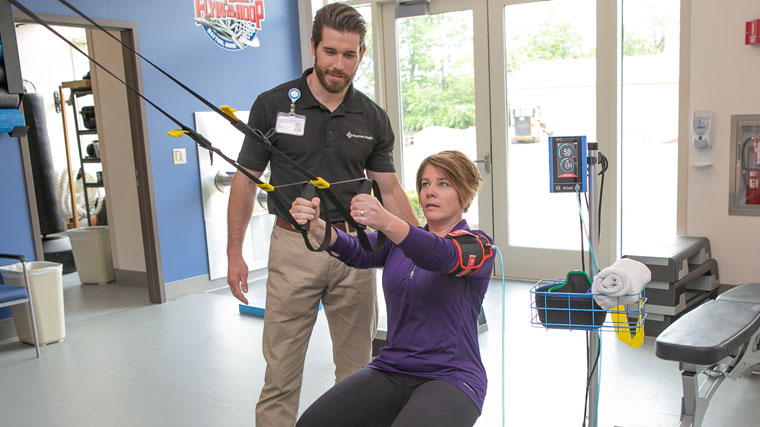Blood Flow Restriction Training: More Muscle, Less Stress

Find Your Perfect Match
Answer a few questions and we'll provide you with a list of primary care providers that best fit your needs.
As researchers continue to search for ways to help people build and sustain muscle growth effectively, a relatively recent development has given new meaning to the old adage that “less is more.”
Blood flow restriction training (BFR) is an exercise technique that uses strategically placed tourniquets to limit the amount of blood being transported from your veins back to your heart. At the same time, it allows your body’s arteries to continue to pump oxygenated blood out to muscles, where the oxygenated blood is trapped.
During a BFR workout, this carefully restricted blood flow technique deprives muscles of oxygen. In addition, because it doesn’t allow any waste materials to escape, it creates metabolic stress that stimulates muscle growth.
“Basically, when you exercise with this tourniquet on, you are creating what is known as a hypoxic environment that drastically reduces oxygen levels in the blood,” says Premier Health physical therapist Michael Duncan, PT, DPT, Orthopedic Certified Specialist, CBIS.
“When that occurs, you're able to get strength and muscle growth gains by lifting just 20 to 30 percent of a one-rep maximum weight that are similar to lifting 85 percent or higher of your one rep maximum weight without BFR. In other words, it allows you to grow more muscle more rapidly by lifting less weight.”
A Faster Road to Recovery
Though it might initially seem that an exercise technique like BFR would be a bodybuilder’s dream, Duncan stresses that BFR simply offers a supplemental benefit for overall athletic training because it’s limited to certain specific muscle groups.
BFR has proven to be most beneficial in rehabilitation settings by allowing those recovering from an injury or surgical procedure to rebuild muscle more quickly, with less physical strain.
“This is really great for us in rehab because we're typically working with a population of people who need to lift much lighter loads in order to protect their joints or healing tissues,” says Duncan.
In addition, patients suffering from a variety of musculoskeletal disorders can benefit from BFR. For example, BFR is a useful tool for osteoarthritis patients. Osteoarthritis is the world’s most common musculoskeletal disease, responsible for reduced muscle function and quality of life for approximately 250 million people, according to the British Journal of Sports Medicine.
“As a therapist, the use of BFR has provided some great opportunities to help a number of patients,” says Duncan. “We've been able to see results that we simply weren’t getting previously.”
Though there are a number of BFR tourniquet systems, the Premier Health sports medicine team uses a digital system that enables them to provide a higher quality of therapy by measuring optimal pressure levels.
“Our digital system is able to administer the right level of pressure to increase safety and produce better results because it recalibrates and adjusts for every repetition,” says Duncan. “There are non-digital systems out there, but with those you risk losing the ability to apply the right amount of pressure, along with any gains you might have obtained at the start.”
Learn More
To learn more about blood flow restriction training and whether it might benefit you, talk with your health care provider. Call the sports medicine center at a Premier Health hospital near you to find a location that offers BFR:
- Atrium Medical Center: (513) 974-2111(513) 974-2111
- Miami Valley Hospital: (937) 734-5720(937) 734-5720
- Upper Valley Medical Center: (937) 667-2614(937) 667-2614 or (937) 440-7152(937) 440-7152
Find Your Perfect Match
Answer a few questions and we'll provide you with a list of primary care providers that best fit your needs.
Sources: British Journal of Sports Medicine; Men’s Health; Michael Duncan, Premier Health physical therapist




